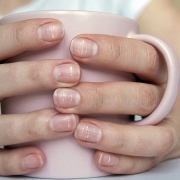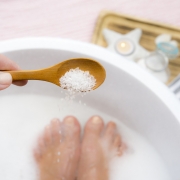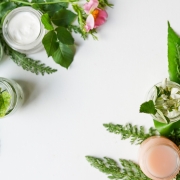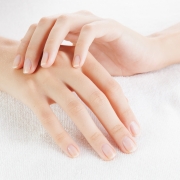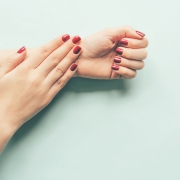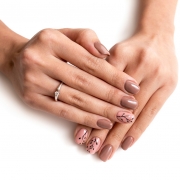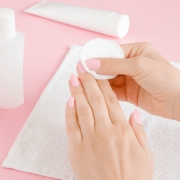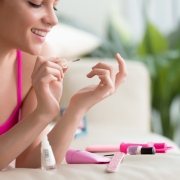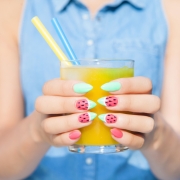Nail alerts about your diet
Nails do not lie to you. Nails are mainly made of a protein called keratin, which is also found in skin and hair cells. Nails are not only used to make art or scratch the skin, but also to protect our fingertips. In addition, our nails can provide us with clues about our health and diet.
If your diet is rich in healthy fats, many nutrients and plenty of water, your nails will be hard and shiny and will be white in the part where it is lifted. Around the nail is soft and in some people there is a white halo at the bottom of the nail.
If your nails are dull and weak and easily flaky and do not grow, the culprit is the lack of nutrients in fruits and vegetables. Nutrients such as phosphorus, chloride, and calcium are essential for maintaining nail color, shape, shine, and growth. When the body is deficient in these nutrients, it has to make choices and use them for vital organs instead of delivering them to the nails.
Excessive diets and severe restriction of foods can have a negative impact on nail health. Any diet that leads to chronic hunger or malnutrition forces the body to use fats and nutrients to protect the most important parts, including the brain and heart. Nails, hair and even the skin will receive less nutrients in this condition, which will make the nails dry and brittle and weak.
Gently apply pressure to your nails and then lift your hand to see what happens. Under normal circumstances, the nails should return to their original position and fill the pressure area. But if the capillaries under the nail lose normal blood flow, it takes half a second for the nail to fill the pressure, which can indicate a lack of water in the body.
Zinc deficiency
White spots on the nails are usually caused by damage during growth, but sometimes it can indicate a lack of zinc in the diet.
Just like creating white horizontal lines on the nails, which can be caused by trauma or uncontrolled diabetes, but may indicate a severe zinc deficiency in your body.
Iron deficiency
Are the edges of your nails turned like a spoon? Spoon-shaped nails are usually the result of severe iron deficiency. You may have this problem if your diet does not contain iron sources such as chocolate, spinach, lentils and tofu. Spoon nails can be caused by hypo-chromic anemia, which is accompanied by weakness and fatigue.
Protein deficiency
Another symptom of iron deficiency is the softening and thinning of the nails. Because nails are made from keratin protein, a diet rich in iron-rich protein such as red meat can help repair, grow, and strengthen nails. And are iron.
Cysteine deficiency
Another possible cause of brittle and weak nails can be a very low amount of cysteine. This important amino acid is involved in the formation of the protein structure of nails, skin and hair. Foods containing soy, red meat, lentil sprouts and wheat bran can deliver this beta-gratin to your body.
Excessive consumption of mercury
Seafood lovers should be careful. If your seafood intake increases, especially fish that are high in mercury, you may see a horizontal white line all over your nails that indicates heavy metal poisoning, such as arsenic, lead, or mercury. Spotted fish, and big-eyed tuna have high concentrations of mercury.
Omega 3 deficiency
Omega 3 is found in salmon and sardines that should be used regularly. Weak and brittle nails can indicate omega-3 deficiency. This problem is more common in vegetarians. Of course, if they use walnuts, chia seeds and Brussels sprouts in their diet, they can provide the omega-3 needed by their body.
Biotin deficiency
Another cause of brittle nails and dark hair and itchy skin can be a lack of biotin or vitamin B7, which is found in egg yolks, sugar, nuts, nuts and sweet potatoes, and as a supplement for better and more growth. Used on nails and hair and skin care.
Excessive glucose intake
Excess glucose in the bloodstream causes the liver to try to balance the body’s insulin levels, which leads to yellowing of the nails and can be a sign of diabetes that has not yet been diagnosed.
Excessive consumption of refined carbohydrates
Another food group that raises blood sugar is refined carbohydrates. Like white bread, pizza, and pasta, which are quickly digested and raise blood sugar, eventually leading to unhealthy, yellowish-colored nails that grow little.
Lack of healthy fats
Our whole body needs healthy fats to grow and nourish cells. Dry, dull and brittle nails that do not grow indicate a severe lack of healthy and essential fats in the body. You can get avocado, eggs, olive oil and even cheese to get these healthy fats into your body.



